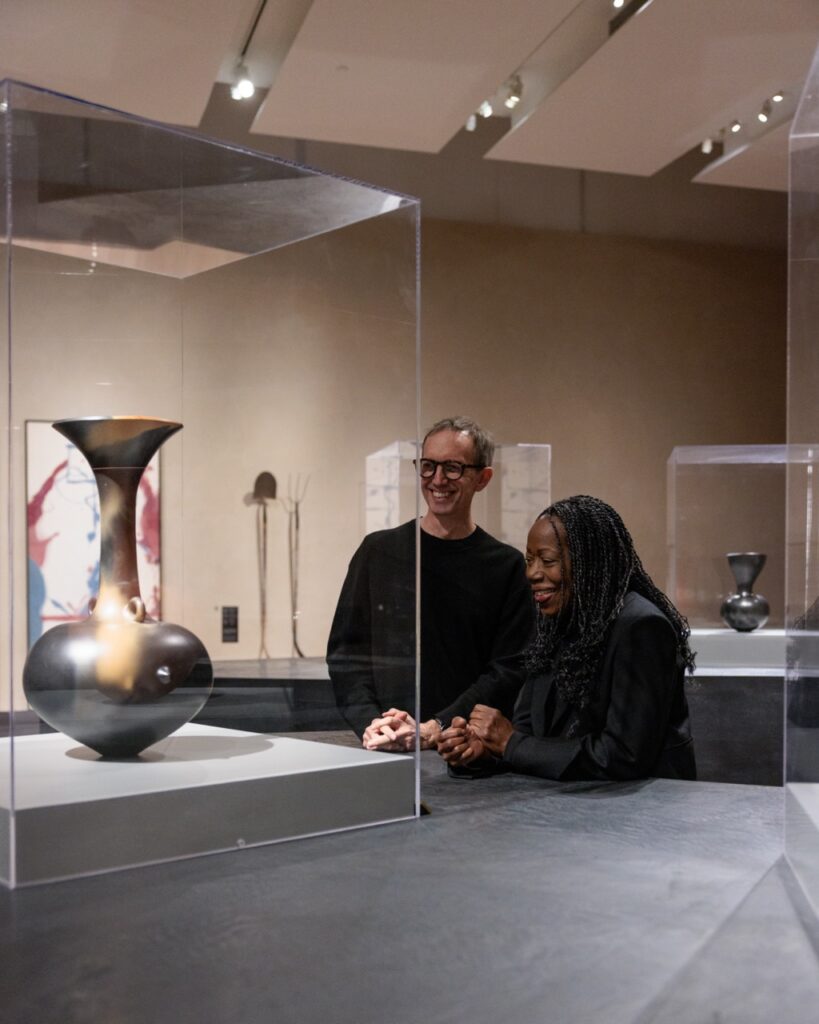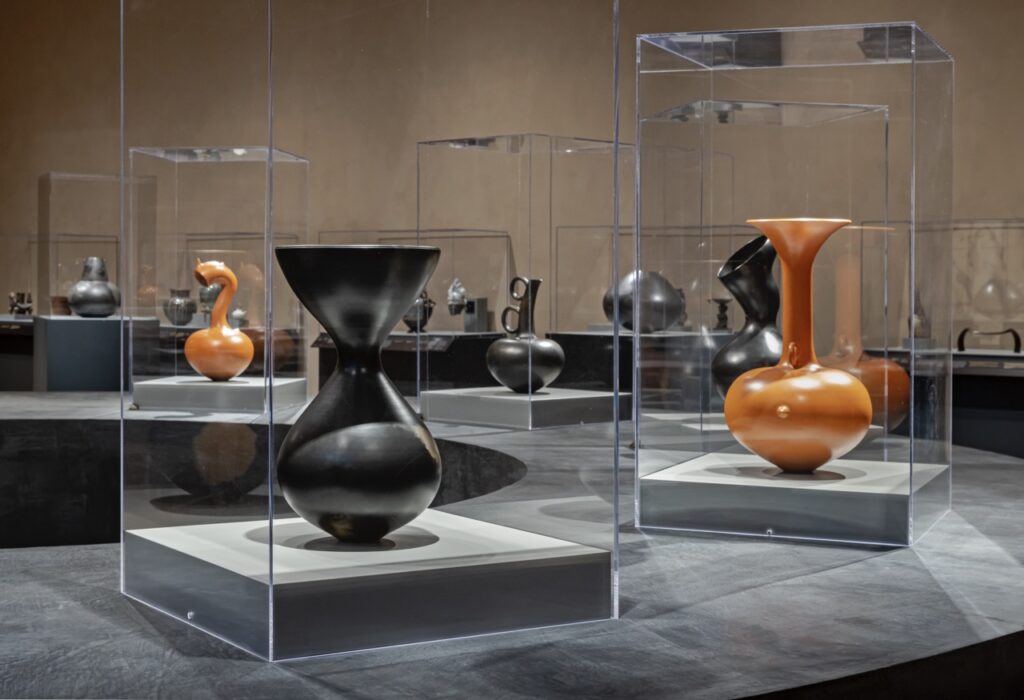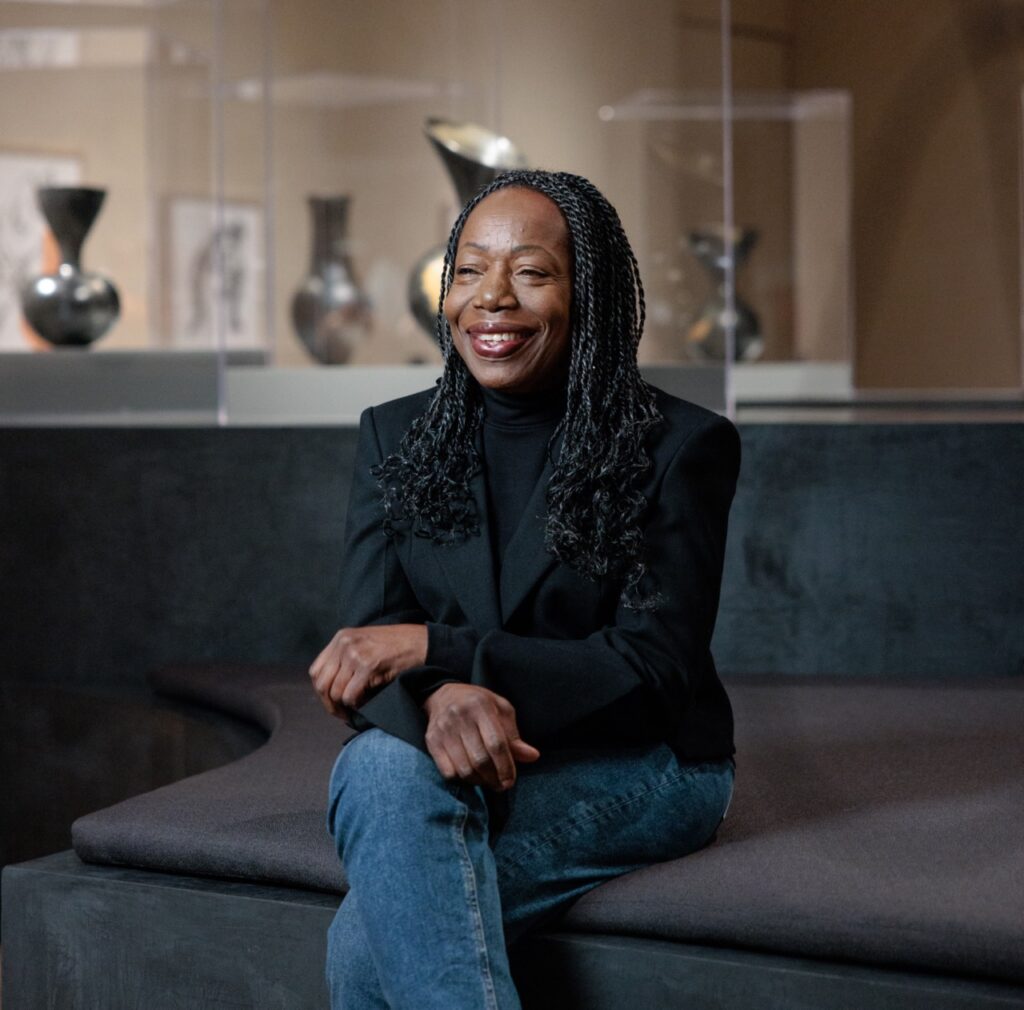A Dialogue with Objects
Magdalene Odundo
Gardiner Museum (Toronto)
October 19, 2023 – April 21, 2024
Review by Patricia Ellah

Kenyan British artist Dame Magdalene Odundo, most famously known for her ceramic works, has just displayed her first exhibition in Canada. Seeing Odundo’s work in person is critical and necessary to understanding the influence that African artists have had on the history of ceramic art. I first became familiar with Odundo’s work through my time studying at Parsons School of Design. She was one of the few contemporary African artists referenced by teachers and students.
The exhibition at the Gardiner Museum, A Dialogue with Objects, features a selection of work that spans her decades-long career. When Odundo’s work is referenced, most people mention her stylistic sculptural vessels—smooth, unglazed, burnished large pieces. Odundo is inspired by the human body’s form, an age-old subject for the ceramic artist. Little body parts, like the shape and placement of a belly button, can be seen protruding from her vessels. Odundo meditates on both the exterior and interior of her form; she intentionally stylizes the interior of her vessels by crafting what she envisions to be sacred and protected spaces.

The history of the African object dates back centuries, and tells a story about forms believed to contain divine ability. Creators of these pieces commemorated coming-of-age ceremonies, marriages, death rituals, and commissions for royalty. They had a talent for treating their creations with reverence, which manifested in the way the object was adorned and crafted.
This history is evident in Odundo’s vessels. The interior of her vessels are created as a space to contemplate silence, encouraging the viewer to look within (the piece and themselves). In Odundo’s silent contemplation, she confronts her childhood of growing up in Kenya under colonial British rule. In the exhibition pamphlet, co-curator Dr. Sequoia Miller writes, “The silent interiors of her vessels allow memories to resurface and for her to come to terms with them.”
While I am not tall enough to see deeply into the vessels, the moody ambience of the space makes the opening of the interior of each piece look like a dark abyss, drawing the viewer in. I reflected on light, on the concept that we need light to reveal all things, and realized that things can be revealed in the darkness too.
In the center of the low-lit gallery, there are 21 ceramic vessels each on a pedestal hidden behind glass. The darkness in the room draws me closer to them, and the spotlight from above bounces off the burnished surface, enhancing the red-orange and black colour of the works.
Odundo’s pieces are made primarily by her own hands. She works without a pottery wheel, which is a magnificent feat considering the signature polished and refined look of her projects.

The gallery walls display illustrations of the vessels that the artist created as a reference to make the ceramic forms. There are also works from various artists who inspire her and whose work intersect with her own in a rather special way. One of those artists is Nigerian potter Ladi Kwali, whose large brown and green jar stands out with its stylized markings and the shape of an amphibian carved out.
Odundo speaks to her connection with Kwali in the exhibition text, highlighting her time spent in Nigeria at the Abuja Pottery Training Centre. There, she met Kwali who taught her hand-building, symmetry, and ornamental technique—an ode to the power of African women working together.
This relationship reflects a readiness to share skills and learn from one another. Bowls speculated to be made by groups of women in the ’60’s are also on display, adding to the collective spirit of African women’s ceramics. Learning about Odundo’s process is inspirational, and experiencing her vessels in person is sure to encourage future generations of women potters to continue the powerful history of working together.
Patricia Ellah is a Nigerian Canadian writer interested in engaging in conversations that surround African Art.

